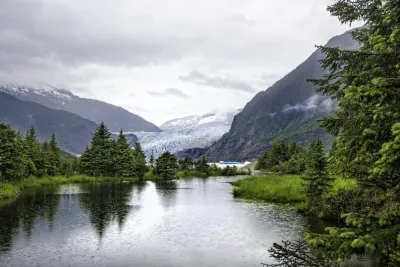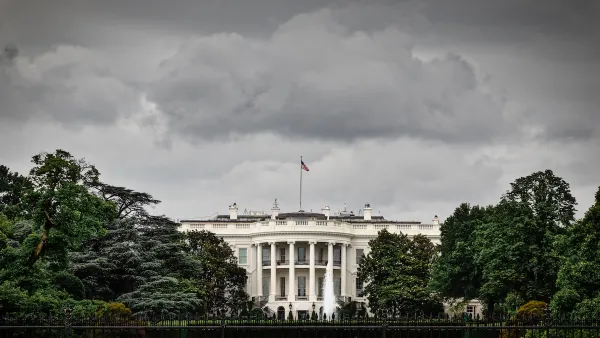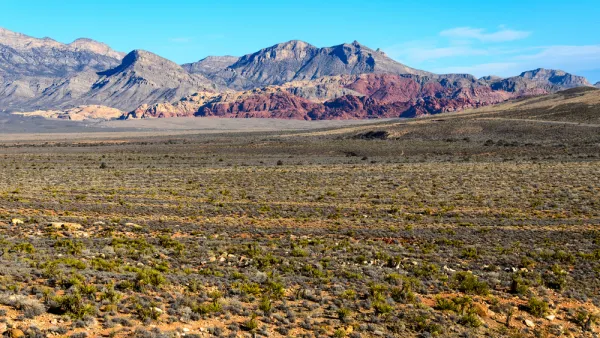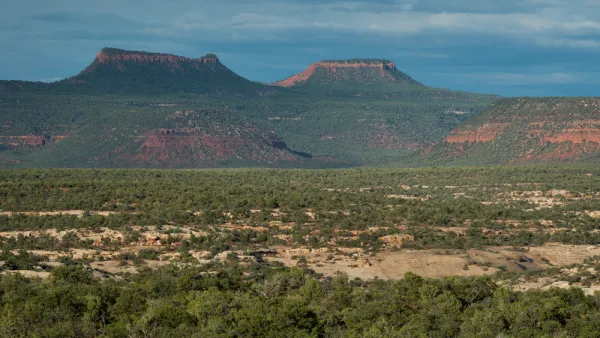The Trump administration has, in the past week before the election, achieved one of the largest rollbacks of public land protections of its entire tenure.

"President Trump will open up all 16.7 million acres of Alaska’s Tongass National Forest to logging and other forms of development," reports Juliet Eilperin.
The U.S. Department of Agriculture published the final rule and record of decision to the Federal Register on October 29, 2020.
The decision overturns protections in place for two decades for one of the world’s largest intact temperate rainforests.
On October 29, it became legal "for logging companies to build roads and cut and remove timber throughout more than 9.3 million acres of forest — featuring old-growth stands of red and yellow cedar, Sitka spruce and Western hemlock."
"The new rule states that it will make 'an additional 188,000 forested acres available for timber harvest,' mainly 'old growth timber,'" according to Eilperin.
According to the article, the national forest is considered an ecological oasis, home to immense ecological diversity and a massive carbon sink—absorbing "at least 8 percent of all the carbon stored in the entire Lower 48′s forests combined," according to Eilperin.
Supporters of the decision, including Gov. Mike Dunleavy and Sen. Dan Sullivan, pressed for the rule change in the hopes of jumpstarting an economy suffering the consequences of the pandemic. Southeast Alaska usually sees 1.4 million cruise passengers a year to fuel its tourism industry. That number has dropped to just 48 people this summer, according to the article. Still, the article reports widespread public disapproval of the decision.
FULL STORY: Trump to strip protections from Tongass National Forest, one of the biggest intact temperate rainforests

National Parks Layoffs Will Cause Communities to Lose Billions
Thousands of essential park workers were laid off this week, just before the busy spring break season.

Retro-silient?: America’s First “Eco-burb,” The Woodlands Turns 50
A master-planned community north of Houston offers lessons on green infrastructure and resilient design, but falls short of its founder’s lofty affordability and walkability goals.

Delivering for America Plan Will Downgrade Mail Service in at Least 49.5 Percent of Zip Codes
Republican and Democrat lawmakers criticize the plan for its disproportionate negative impact on rural communities.

Test News Post 1
This is a summary

Test News Headline 46
Test for the image on the front page.

Balancing Bombs and Butterflies: How the National Guard Protects a Rare Species
The National Guard at Fort Indiantown Gap uses GIS technology and land management strategies to balance military training with conservation efforts, ensuring the survival of the rare eastern regal fritillary butterfly.
Urban Design for Planners 1: Software Tools
This six-course series explores essential urban design concepts using open source software and equips planners with the tools they need to participate fully in the urban design process.
Planning for Universal Design
Learn the tools for implementing Universal Design in planning regulations.
EMC Planning Group, Inc.
Planetizen
Planetizen
Mpact (formerly Rail~Volution)
Great Falls Development Authority, Inc.
HUDs Office of Policy Development and Research
NYU Wagner Graduate School of Public Service





























